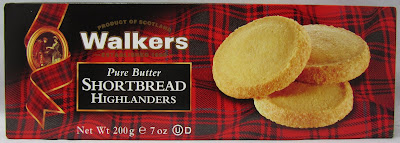Last
week marked two holidays associated with food: Valentine’s Day, when, as they
have since the 15th century at least, lovers regale one another with
sweets and flowers; and Shrove Tuesday, the day when one feasts on the rich
foods one won’t taste again until the lean days of Lent have come and
gone. In New Orleans, it’s called Mardi Gras, literally “Fat Tuesday,”
and but I’m partial to the British name, Pancake Tuesday (or just plain Pancake
Day), which has always struck me as a bit silly (sorry all you Brits!). Think
of it: of all the foods you could indulge in if you were to throw caution to
the wind, would it be pancakes that came first to mind?
But
apparently the British have long loved their pancakes. The word first appears in a 15th century cookery book, but I doubt the recipe would feature at your local IHOP: it called for pepper, mace, cloves, saffron, and "if thou wilt," a little minced pork or veal. By the time of the 1615 The English
Housewife (the full subtitle of which is “Containing the inward and
outward virtues which ought to be in a complete woman; as her skill in physic,
cookery, banqueting-stuff, distillation, perfumes, wool, hemp, flax, dairies,
brewing, baking, and all other things belonging to a household”), Gervase
Markham provides a more familiar recipe, with the addition of some sweet spices, for what he rather immodestly calls “The best
pancake”:
To make the best pancake, take two or three eggs,
and break them into a dish, and beat them well; then add unto them a pretty
quantity of fair running water, and beat all well together; then put in cloves,
mace, cinnamon, and nutmeg, and season it with salt: which done, make it thick as
you think good with fine wheat flour; then fry the cakes as thin as may be with
sweet butter, or sweet seam [fat, grease, or lard], and make them brown, and so serve them up with
sugar strewed upon them. There be some which mix pancakes with new milk or
cream, but that makes them tough, cloying and not crisp, pleasant and savoury
as running water.
Markham
may have preferred pancakes made with water, but his recipe would be
self-defeating as far as Shrove Tuesday is concerned when the point is to eat
up as much butter and cream as possible (it isn’t called Fat Tuesday for
nothing). And such pancakes aren’t only eaten; they’re also tossed in the air
in a custom known as “pancake races,” held in villages throughout the UK since
long before Markham put pen to paper and continuing to this day. The most
famous such race, according to Ronald Hutton’s The Stations of the Sun: A
History of the Ritual Year in Britain, “is confined to adult women [who]
run from the market square to the church, using standard-sized frying pans in
which each pancake must be tossed at least three times en route.” Regulations
are strict: all contestants must wear aprons and headscarves, and the course
run must measure exactly 380 meters/415 yards.
I’m
not aware of any such custom here in the US, but what we lack in the way of
pancake racing we more than make up for in the quaint and quirky names we give our
pancakes. Flapjacks, for instance, for which The Dictionary of American
Regional English provides the following synonyms: "Flapjack. 1.
A pancake. Also called clapjack, flapcake, flapover, flatcake, flatcjack,
flipjack, flipper, flopjack, flopover, slapjack.”
And
that’s not to mention the more familiar hotcake, griddlecake, hoecake (perhaps
cooked on hoes propped over an open fire), or johnnycake (traditionally made
from Rhode Island’s Narragansett white-cap corn and often believed to have
evolved from “journey cake”).
All this history aside, my own personal pancake preference tends toward a heartier batter than the
one Markham touted in his English Housewife. I’d rather my pancakes not
be quite as flat as, say, a pancake. Since I've almost always got a
container of buttermilk in the fridge and a box of baking soda in the cabinet, I can stir up thick batters at
a moment’s notice. Like the following one, which is sort of Scottish (the oats and the buttermilk) and sort of American (the maple syrup) all at the same time, and so should satisfy eaters on either side of the Atlantic.
Oatmeal Pancakes
(makes about 12 4” pancakes)
1 cup rolled oats 2 tablespoons sugar
1 cup buttermilk 1 teaspoon baking soda
1 egg 1 teaspoon baking powder
1/2 cup water 2 tablespoons maple syrup
1 cup all-purpose flour 3 tablespoons vegetable oil















